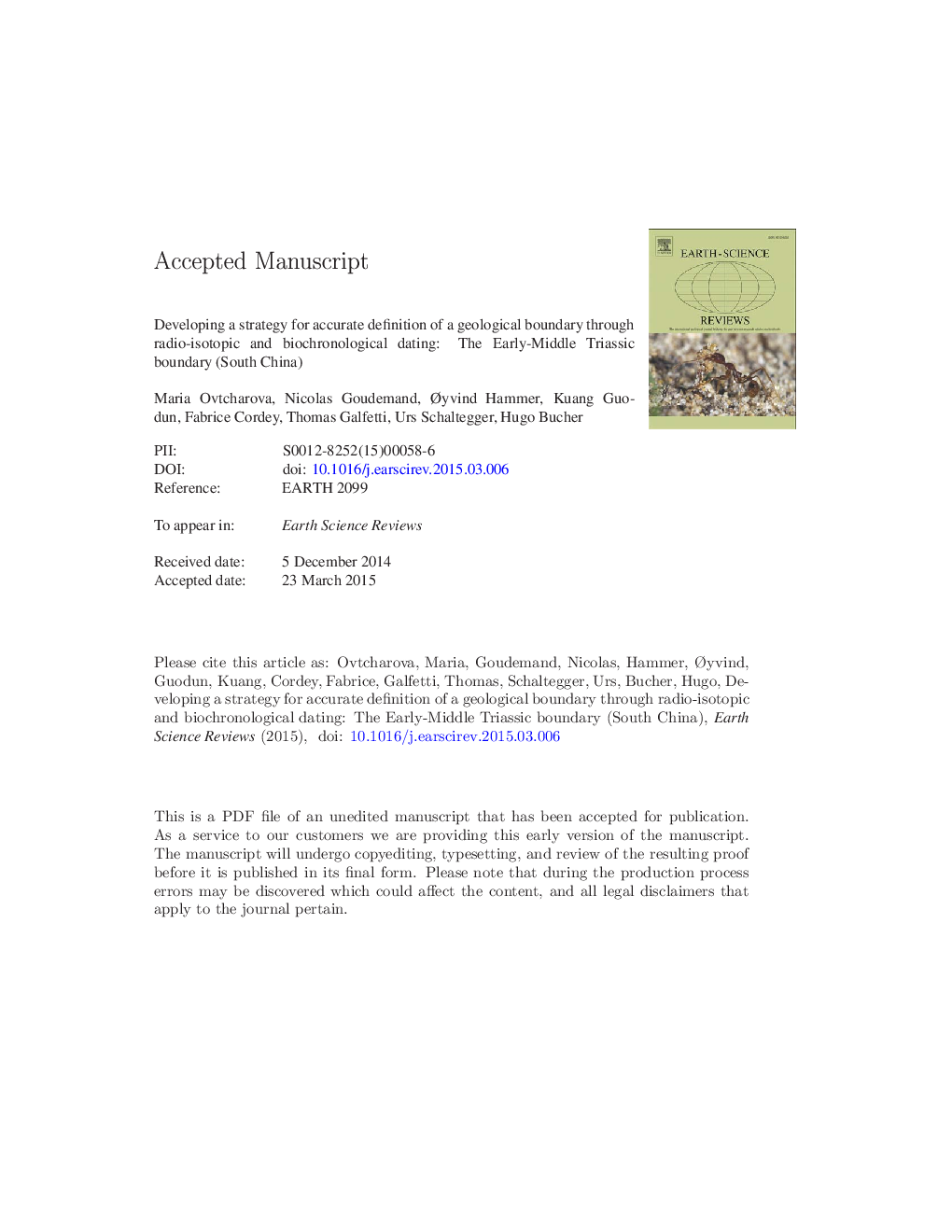| Article ID | Journal | Published Year | Pages | File Type |
|---|---|---|---|---|
| 6442996 | Earth-Science Reviews | 2015 | 28 Pages |
Abstract
Volcanic zircon in the analyzed ash beds reveals complex system behavior, in particular (i) unresolved lead loss after chemical abrasion, and (ii) pre-eruptive growth and/or recycling of zircon crystals, leading to excess scatter in 206Pb/238U dates and to violations of the stratigraphic sequence. A sufficiently high number of closely spaced ash samples (N) and of U-Pb analyses per sample (n) promotes recognition of such complications. Two different age models were constructed from weighted mean 206Pb/238U dates, comparing smoothing cubic spline and Bayesian interpolation approaches. The statistical treatment of the combined datasets allows quantification of the lower and upper limits and associated uncertainties of the two conodont biozones as well as of the FO of C. timorensis. The age for the EMTB is calculated from combined interpolated data at 247.05 ± 0.16 Ma. The age model derived from Bayesian interpolation is considered to be more adapted to the present case, where discontinuous changes in sedimentation rates are expected to be important. The smoothing spline represents a more parsimonious model, producing a simpler solution in terms of smoothness, but the model assumptions are too strong for many geological problems. The additional freedom in constructing the Bayesian interpolating curve presumably leads to more realistic, albeit larger confidence intervals.
Related Topics
Physical Sciences and Engineering
Earth and Planetary Sciences
Geology
Authors
Maria Ovtcharova, Nicolas Goudemand, Ãyvind Hammer, Kuang Guodun, Fabrice Cordey, Thomas Galfetti, Urs Schaltegger, Hugo Bucher,
